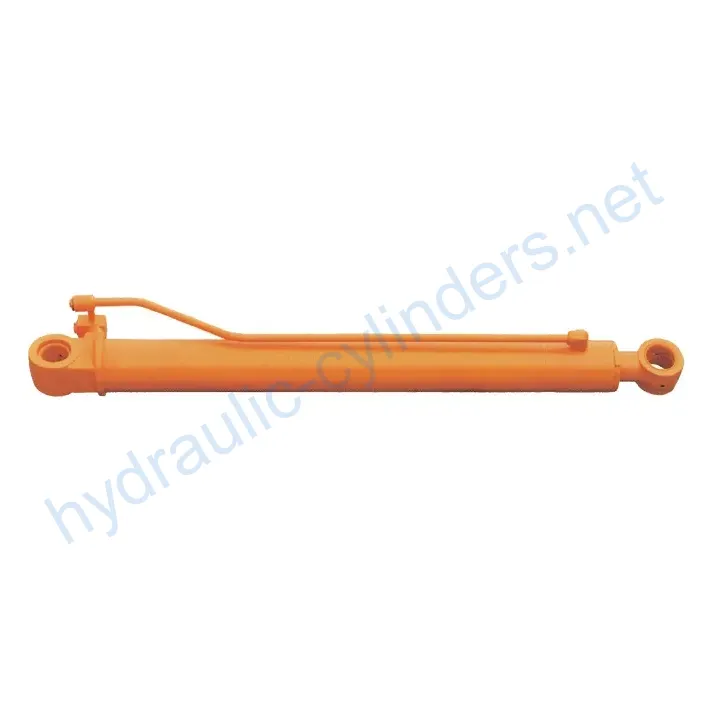Arm Cylinder For Bobcat Small Excavator E50
Som en av tillverkarna, leverantörerna och exportörerna av mekaniska produkter erbjuder vi hydraulcylindrar och många andra produkter.
Vänligen kontakta oss för mer information.
E-post:sales@hydraulic-cylinders.net
Tillverkare, leverantör och exportör av hydraulcylindrar.
Arm Cylinder For Bobcat Small Excavator E50
Introduction
The arm cylinder is a specialized hydraulic cylinder designed to provide linear motion and power to the arm of various machinery, such as excavators, cranes, and mechanical arms. It plays a crucial role in hydraulic systems, allowing for the efficient movement and control of additional tools or attachments. These cylinders not only enable smooth motion but also withstand heavy loads, ensuring efficient operation and reliability of the machinery under various working conditions.

Features
High Efficiency Transmission
The arm cylinder provides powerful linear motion and force, ensuring high performance of the mechanical arm in various operations.
Precise Control
Through hydraulic systems, the arm cylinder enables precise motion control, making the operation of additional tools more flexible and accurate.
Durability
Arm cylinders are typically manufactured using high-strength materials, with good wear resistance and corrosion resistance, suitable for long-term use in harsh environments.
Multi-functional Adaptability
These cylinders can be widely applied to various types of machinery, such as excavators, cranes, and mechanical arms, to meet different job requirements.
Easy Maintenance
The design of the arm cylinder takes into consideration ease of maintenance and replacement, making regular inspections and maintenance more convenient and reducing equipment downtime.

Applications
The arm cylinder finds its use in various industries and applications, including:
Construction Engineering
In excavators and cranes, the arm cylinder is used to control the movement of buckets or booms, performing earthworks, material handling, and structural installations.
Manufacturing
In automated production lines, the arm cylinder is used for the motion of mechanical arms, performing assembly, welding, and handling processes to improve production efficiency and precision.
Agricultural Machinery
In agricultural machinery such as harvesters and seeders, the arm cylinder controls the movement of operating arms, executing tasks such as seeding, fertilizing, and harvesting.
Mining
In mining equipment, the arm cylinder is used to control the arm movement of mining equipment, facilitating ore extraction and transportation.
Logistics and Transportation
In forklifts and handling robots, the arm cylinder is used to control the lifting and movement of forks, enabling material handling and stacking.
Design Considerations and Selection Criteria
When it comes to the design considerations and selection criteria for arm cylinders, several key factors should be taken into account:
Load-bearing Capacity
Arm cylinders should be able to withstand the intended loads and forces to ensure safe and efficient operation.
Sealing
Various sealing components, such as piston seals and rod seals, should be used to ensure proper sealing. These seals are often made of wear-resistant materials like polyurethane and nitrile rubber.
Durability
The cylinder body and threaded end surfaces should undergo fine treatment to improve wear resistance. Regular lubrication with hydraulic oil is necessary to enhance durability.
Safety
Safety measures should be considered during the design and operation of arm cylinders to prevent accidents and ensure operator safety.
Maintainability
Arm cylinders should be designed for ease of maintenance and repair, allowing for quick inspections and component replacements when needed.

Sealing and Lubrication
Arm cylinders utilize various sealing components, such as piston seals and rod seals, made of wear-resistant materials like polyurethane and nitrile rubber. The cylinder body and threaded end surfaces undergo fine treatment to improve wear resistance. Regular lubrication with the appropriate amount of hydraulic oil is necessary to ensure smooth operation and prolong the lifespan of the cylinder.
Regular Inspection and Preventive Maintenance
To ensure the optimal performance and longevity of the arm cylinder, regular inspections and preventive maintenance should be conducted. The following measures can be taken:
- Inspect the cylinder body and components for any signs of wear or damage.
- Check the seals and replace them if necessary.
- Monitor the lubrication level and top up with hydraulic oil as needed.
- Tighten any loose connections or fasteners.
- Inspect the mounting brackets and ensure they are secure.
Product Installation Guide
Proper installation of the arm cylinder is crucial for its performance and safety. Follow these steps for correct installation:
- Prepare the mounting surface and ensure it is clean and flat.
- Attach the cylinder to the mounting brackets using appropriate fasteners.
- Connect the hydraulic hoses and ensure proper sealing.
- Check the alignment of the cylinder and adjust if necessary.
- Secure all connections and perform a pressure test to ensure proper functionality.

Safety Considerations and Environmental Factors
When utilizing arm cylinders, it is important to prioritize safety measures. Safety precautions should be followed to prevent accidents and ensure the well-being of operators and other personnel.
Troubleshooting and Common Issues
In case of any malfunctions or issues with the arm cylinder, the following troubleshooting tips and solutions can be helpful:
Issue: Cylinder not extending or retracting properly.
Solution: Check for any blockages in the hydraulic lines, inspect the seals for damage, and ensure proper lubrication of all moving parts.
Issue: Leakage around the cylinder.
Solution: Inspect the seals and replace them if damaged. Ensure proper tightening of all connections and fittings.
Issue: Excessive noise during operation.
Solution: Check for loose components or fittings and tighten them. Inspect the cylinder for any
Take a Tour of Our VR Factory:
Take a tour of our VR factory with the following
How Does Forklift Hydraulic Cylinder Work?
Hydraulic Cylinder Application:


